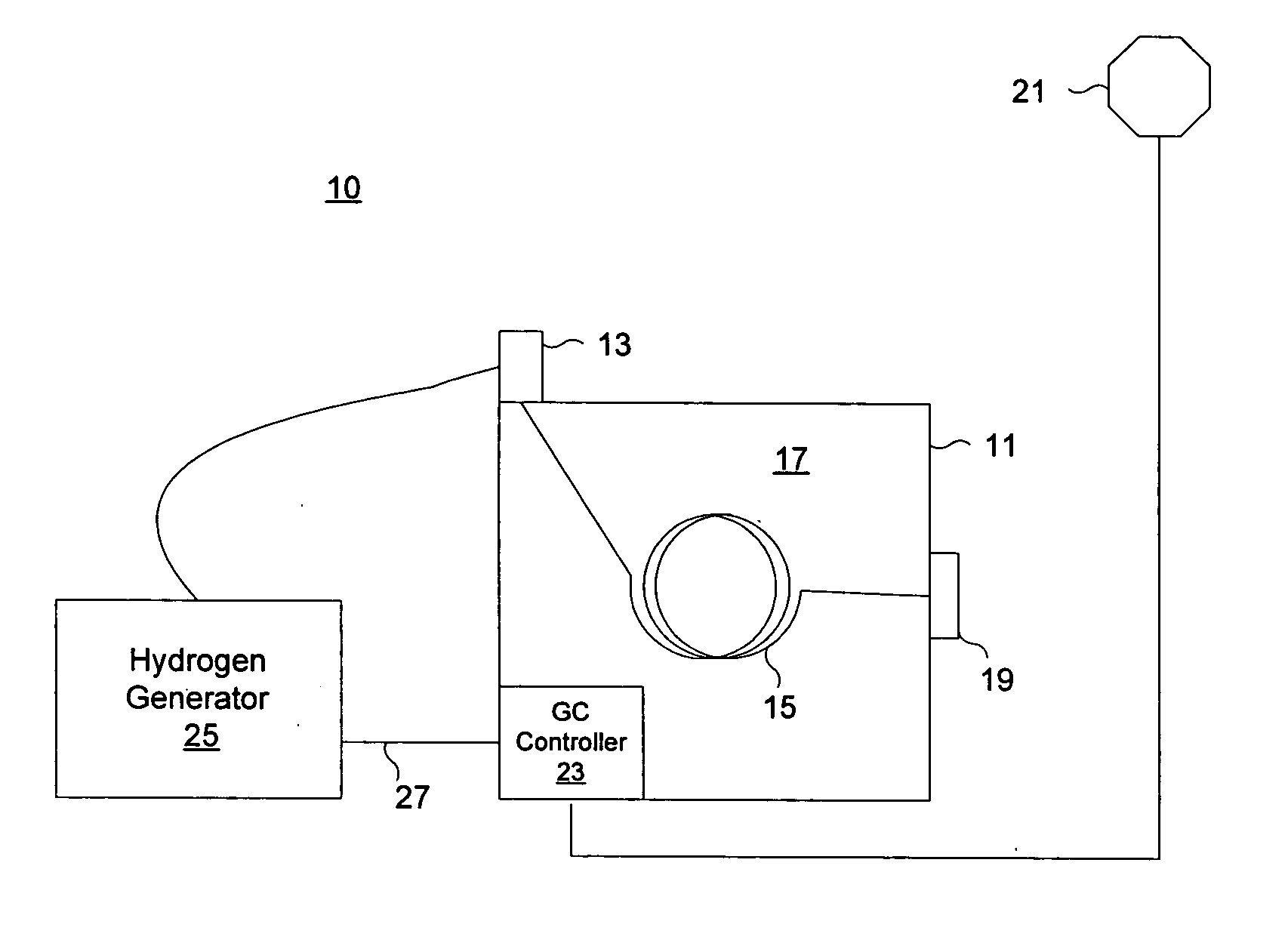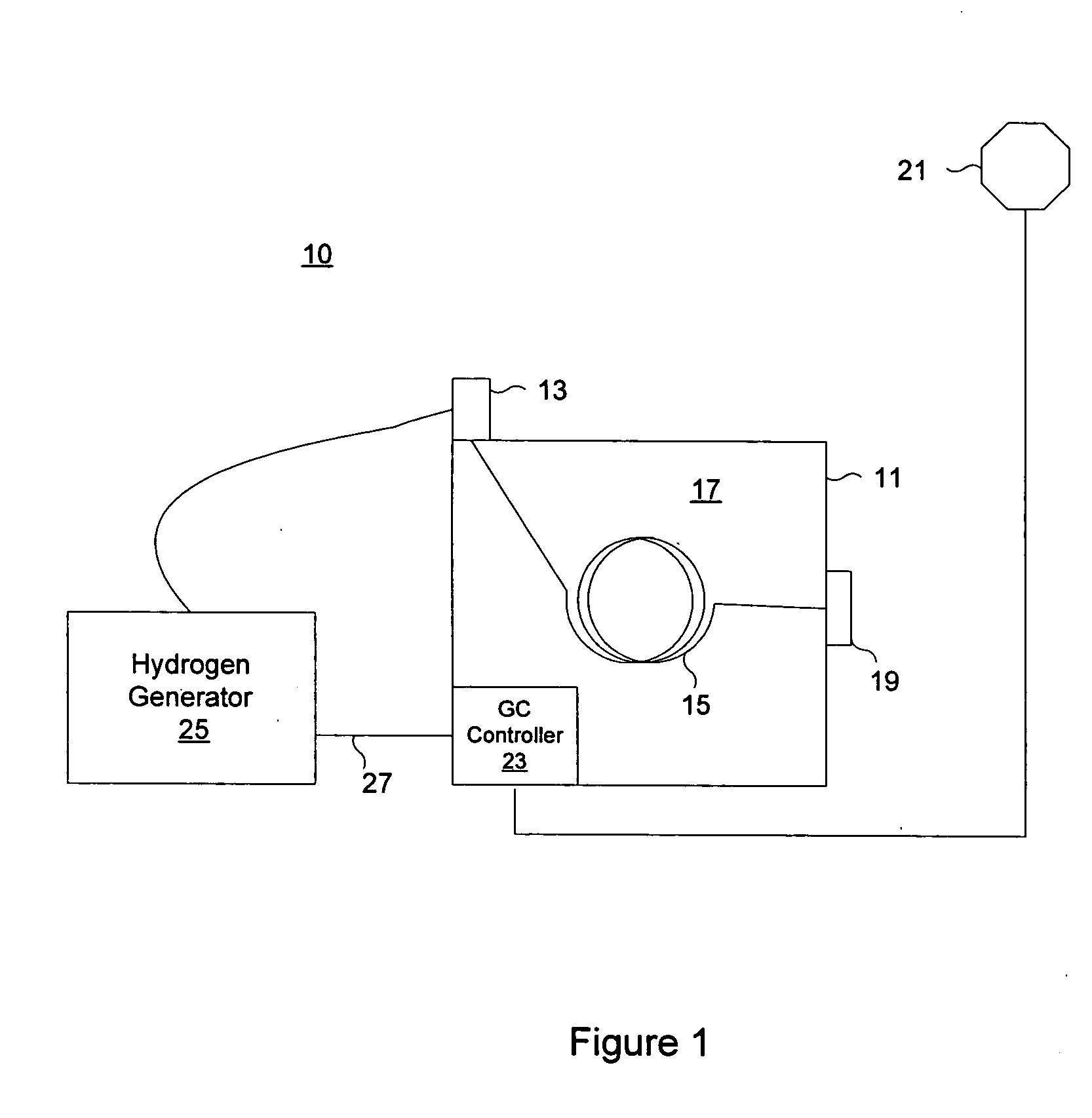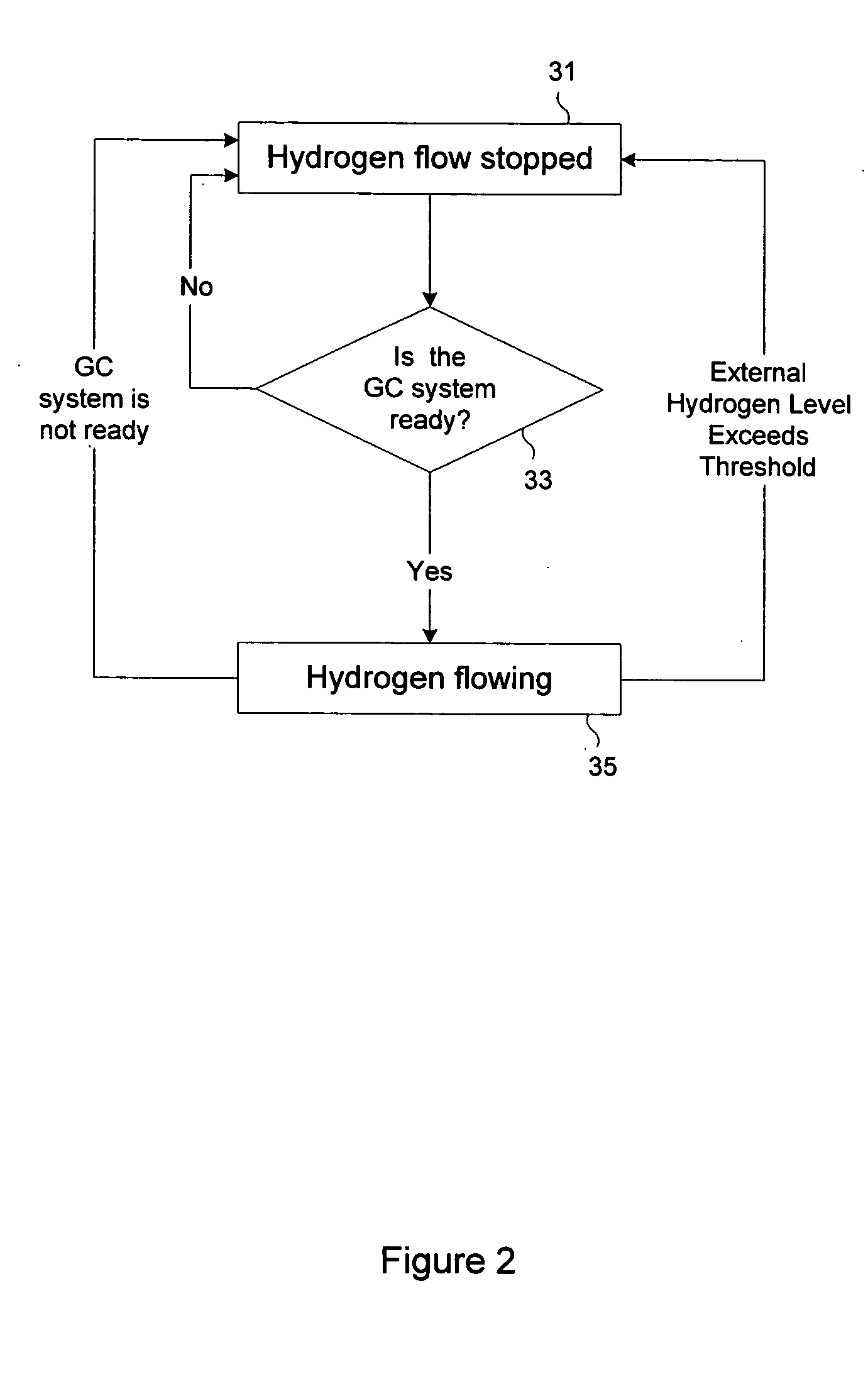Interlocked hydrogen source for gas chromatography
- Summary
- Abstract
- Description
- Claims
- Application Information
AI Technical Summary
Benefits of technology
Problems solved by technology
Method used
Image
Examples
Embodiment Construction
[0009]FIG. 1 shows a preferred embodiment of a gas chromatography system 10 made in accordance with the teachings of the present invention. The gas chromatography system 10 includes a gas chromatograph (GC) 11, a hydrogen generator 25, a hydrogen sensor 21, and a detector 19. The GC 11 has an injector 13 that injects a sample into a column 15. The column 15 is contained in a temperature-controlled oven 17. A GC controller 23 is the internal “brain” (e.g. a CPU or microprocessor) that runs the GC 11. It controls details such as the oven temperature, the injection of an analyte, the flow rate of the carrier gas, etc. Not shown in the drawing are the appropriate exhaust lines for hydrogen from such devices as the split port of the GC, or the mass spectrometer pumping system exhaust port, or other places germane to the specific GC and detector configurations.
[0010] A hydrogen generator 25 generates hydrogen gas from deionized water. Typically, the hydrogen generator 25 produces hydroge...
PUM
 Login to View More
Login to View More Abstract
Description
Claims
Application Information
 Login to View More
Login to View More - R&D
- Intellectual Property
- Life Sciences
- Materials
- Tech Scout
- Unparalleled Data Quality
- Higher Quality Content
- 60% Fewer Hallucinations
Browse by: Latest US Patents, China's latest patents, Technical Efficacy Thesaurus, Application Domain, Technology Topic, Popular Technical Reports.
© 2025 PatSnap. All rights reserved.Legal|Privacy policy|Modern Slavery Act Transparency Statement|Sitemap|About US| Contact US: help@patsnap.com



